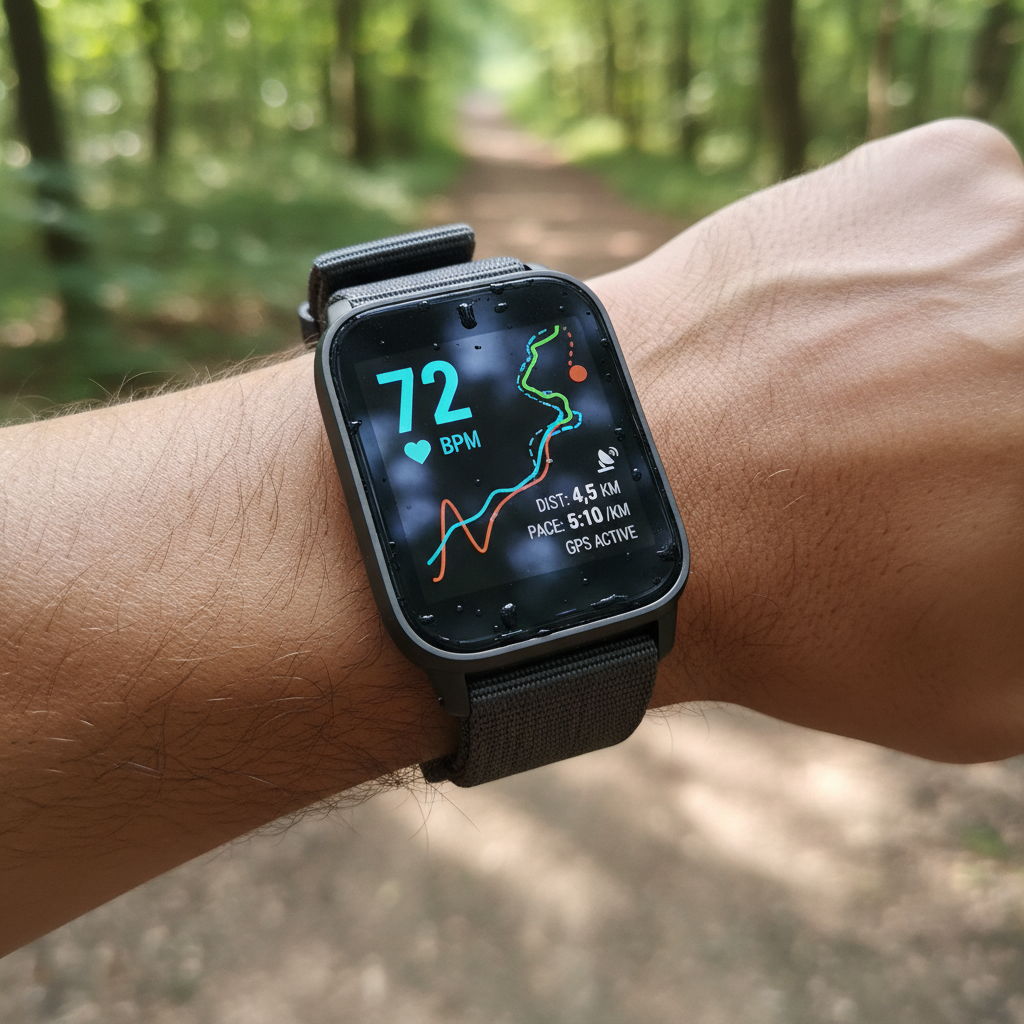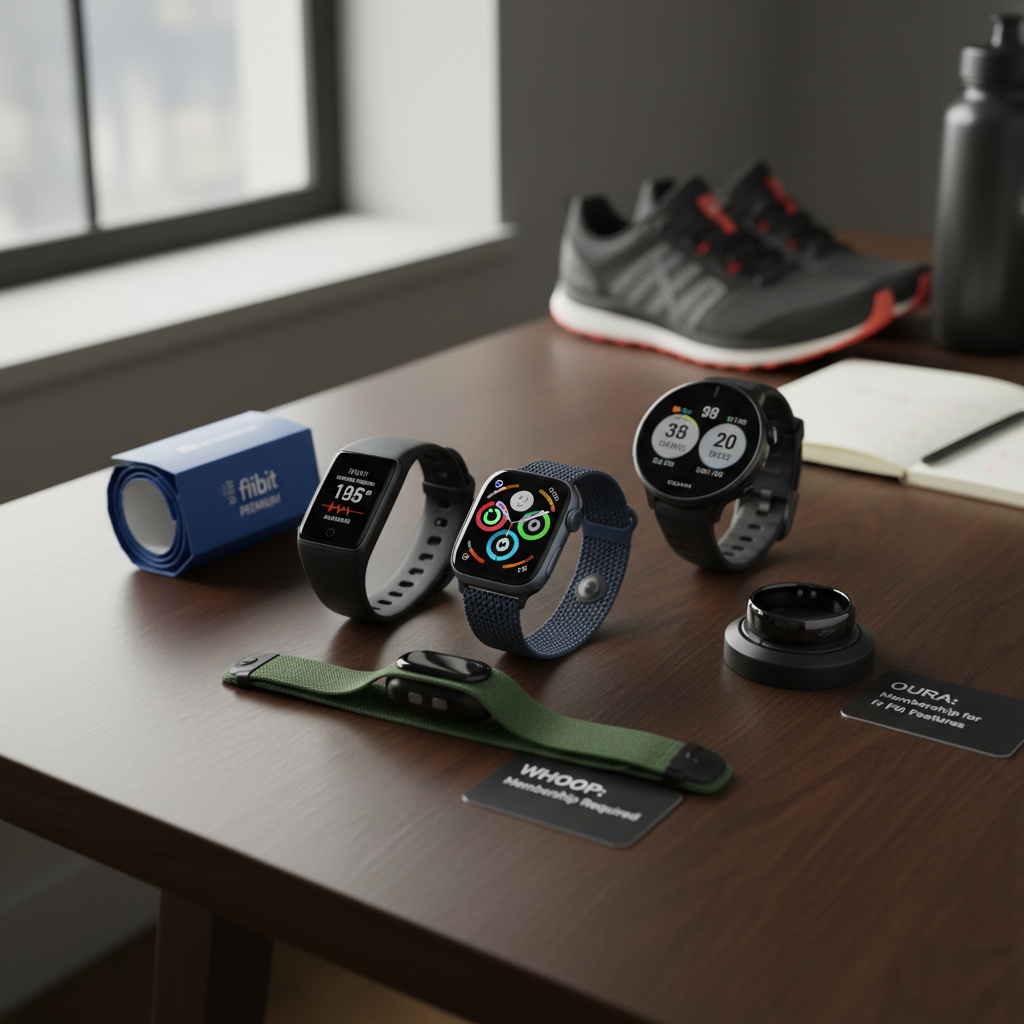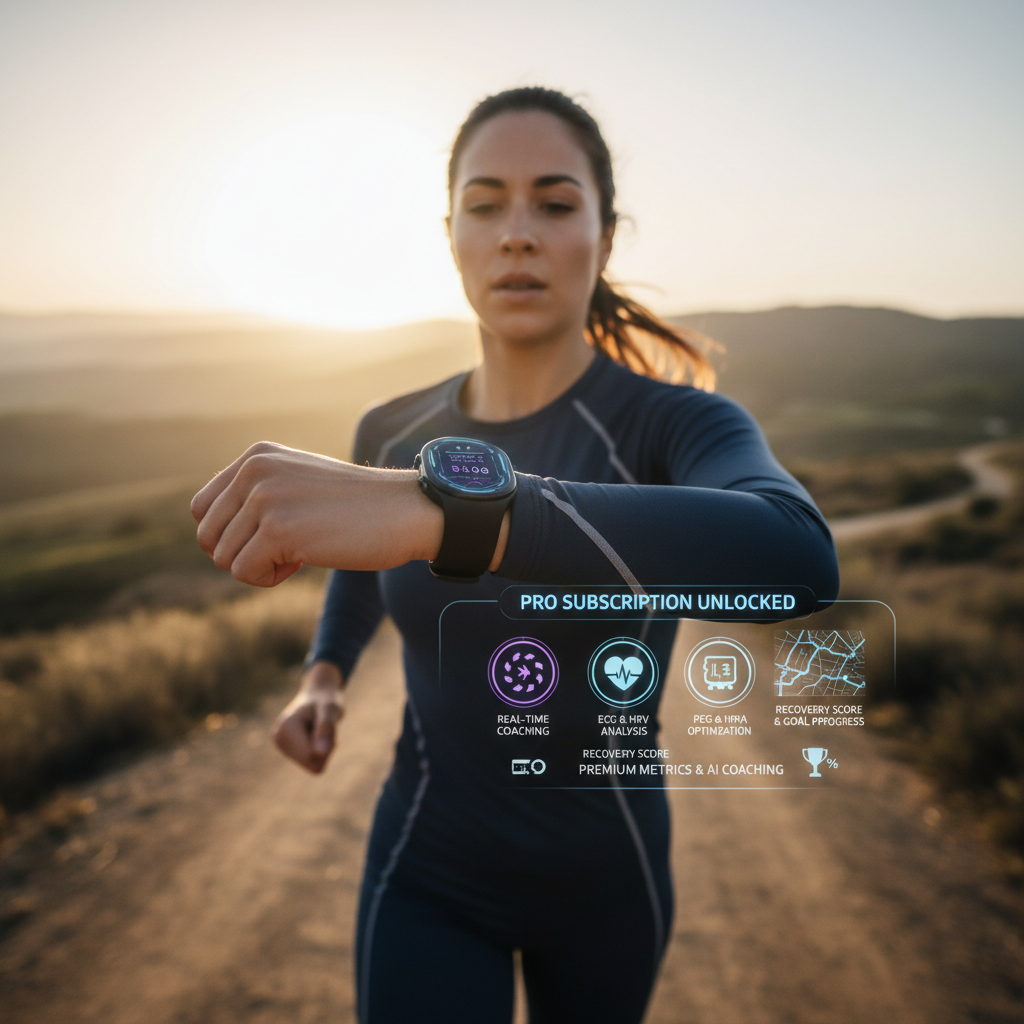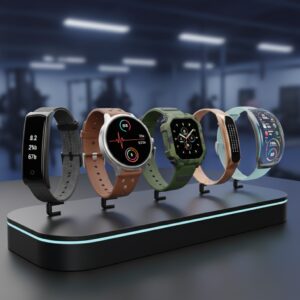
It’s 2025, and the fitness tracker market is more advanced than ever. You can now monitor your heart rate, track your GPS routes, and even get medical-grade recovery insights—all from your wrist. But there’s a catch: the most powerful features are often locked behind a monthly or annual subscription. If you’re shopping for a premium wearable with heart rate and GPS, you’re not just buying a device—you’re signing up for a recurring bill. Let’s break down what’s really going on, which brands are charging the most, and how you can get the features you want without falling into the subscription trap.
The Subscription Trap: What’s Behind the Price Tag?
Most premium fitness trackers now require a subscription to unlock their full potential. For example, the WHOOP 5.0 is one of the most talked-about devices for recovery and HRV tracking, but it comes with a mandatory annual membership that ranges from $199 to $239 per year. The device itself is included, but without the subscription, you lose access to the advanced analytics, recovery scores, and personalized coaching that make WHOOP stand out.
Similarly, the Oura Ring 4 offers discreet sleep tracking and health insights, but it also requires a monthly membership of $5.99 (about $72 per year) to access its full suite of features. Even Fitbit Premium, which unlocks advanced metrics and personalized plans, costs around $100 per year.

These recurring fees add up quickly. If you’re comparing a $200 device with a $200 annual subscription, you’re actually spending $400 in the first year alone. Over three years, that’s $800—more than the price of many high-end smartwatches.
What Features Are Locked Behind Subscriptions?
So, what do you actually get for your subscription dollars? Here’s a breakdown of the most common premium features:
- Advanced Heart Rate Analytics: Continuous HRV monitoring, stress tracking, and recovery scores.
- GPS Tracking: Some devices require a subscription to access detailed route mapping and performance analysis.
- Personalized Coaching: AI-driven insights, workout recommendations, and health goals.
- Sleep and Recovery Insights: In-depth sleep staging, readiness scores, and recovery tips.
- Medical-Grade Insights: On-demand ECG readings, blood pressure trends, and other health metrics.
Without a subscription, you’re often limited to basic step counting, heart rate monitoring, and simple activity tracking. The advanced features that make these devices “premium” are only available if you keep paying.
Top Premium Fitness Trackers in 2025: Device + Subscription Costs
Here’s a look at the most popular premium fitness trackers and their total costs for 2025:
WHOOP 5.0
- Device: Included with membership
- Subscription: $199–$239/year
- Key Features: 24/7 HRV, skin temperature, recovery scores, personalized coaching
- Pros: No screen, lightweight, continuous data capture
- Cons: No GPS, no on-device ECG, subscription required for all features
Oura Ring 4
- Device: $349–$499
- Subscription: $5.99/month ($72/year)
- Key Features: Sleep tracking, HRV, readiness scores, AI-powered advisor
- Pros: Discreet, validated sleep metrics, long battery life
- Cons: Subscription required for advanced features, no GPS
Fitbit Charge 6
- Device: $159.95
- Subscription: $99/year (Fitbit Premium)
- Key Features: Heart rate, ECG, stress tracking, GPS, advanced analytics
- Pros: Affordable device, Google integration, swim-proof
- Cons: Subscription required for full features, limited battery life
Garmin Forerunner 965
- Device: $599.99
- Subscription: $49.99/year (Garmin Connect Plus)
- Key Features: Dual-band GPS, advanced HR, recovery insights, training plans
- Pros: No mandatory subscription, premium build, long battery life
- Cons: Expensive device, subscription unlocks advanced analytics
Apple Watch Series 10
- Device: $399–$949+
- Subscription: None required for core features
- Key Features: Heart rate, ECG, GPS, UWB, third-party apps
- Pros: No mandatory subscription, rich ecosystem, premium features
- Cons: Expensive, shorter battery life
How to Avoid the Subscription Trap
If you want premium features without the recurring fees, here are some actionable strategies:
1. Choose Devices with No Mandatory Subscription
Some brands, like Garmin and Apple, offer advanced features without requiring a subscription. While Garmin Connect Plus and Apple Fitness+ are available for extra analytics and coaching, the core heart rate, GPS, and recovery features are included with the device.

2. Look for One-Time Purchase Options
Devices like the Coros Pace 3 and Samsung Galaxy Fit 3 offer comprehensive tracking without any subscription. These are great for runners and fitness enthusiasts who want value and simplicity.
3. Evaluate What You Really Need
Ask yourself: Do you need daily recovery scores, AI coaching, and advanced sleep analytics? If not, a basic device with heart rate and GPS might be enough. Many entry-level trackers offer solid performance without the subscription.
4. Compare Total Cost of Ownership
When shopping, calculate the total cost over three years. A $200 device with a $200 annual subscription will cost $800 over three years, while a $300 device with no subscription will cost $300. The difference is significant.
Expert Tips and Recommendations
According to fitness tracker experts, the best approach is to prioritize your needs and budget. If you’re a serious athlete or health enthusiast, a subscription-based device like WHOOP or Oura might be worth the investment. But if you’re a casual user or want basic tracking, a one-time purchase device is often the smarter choice.
Also, keep an eye on new developments. Some brands are starting to offer more features without subscriptions, and the market is shifting in response to consumer demand.
Conclusion: Buy Smart, Not Just Premium
The premium fitness tracker market in 2025 is full of advanced devices, but the real cost is often hidden in the subscription. By understanding what’s included, comparing total costs, and choosing the right device for your needs, you can get the features you want without falling into the subscription trap. Whether you go for WHOOP, Oura, Garmin, or a no-subscription option, make sure you’re getting value for your money.

Ready to make a smart choice? Start by listing your must-have features, then compare the total cost of ownership for each device. With the right strategy, you can stay healthy, track your progress, and keep your budget in check.


